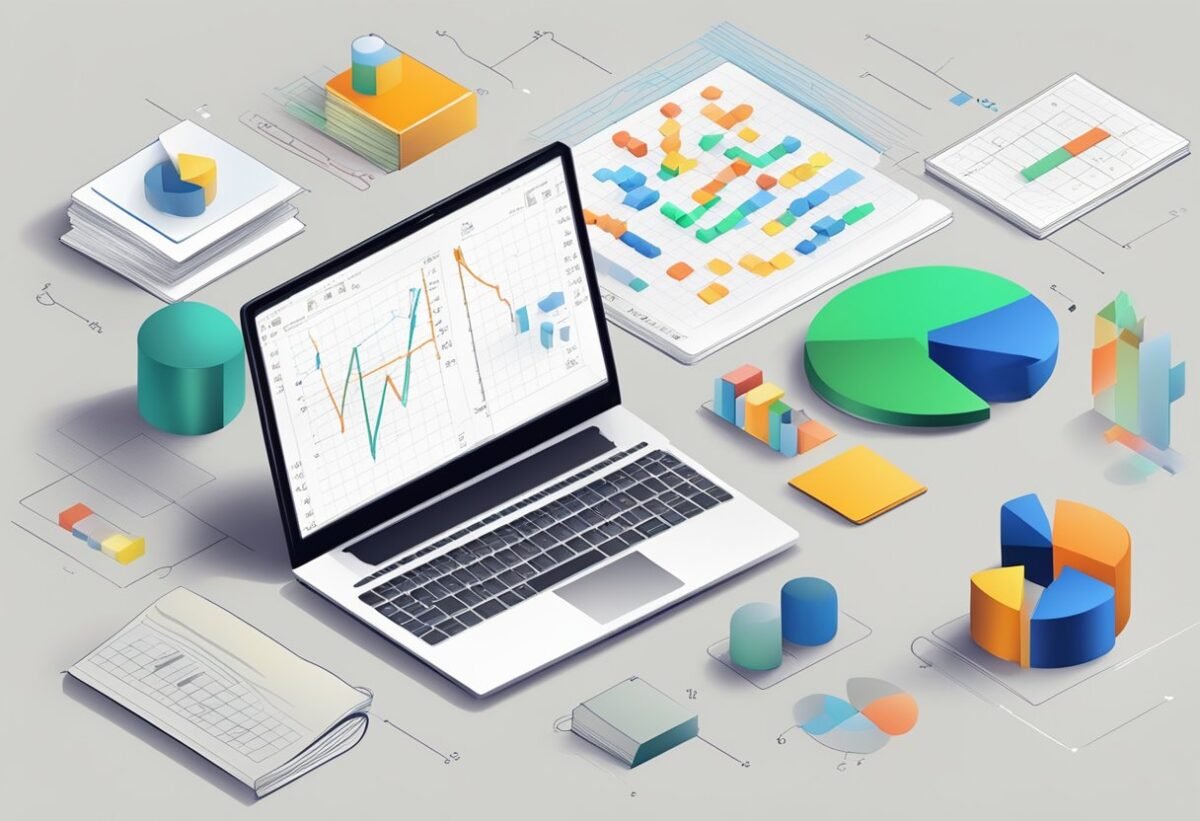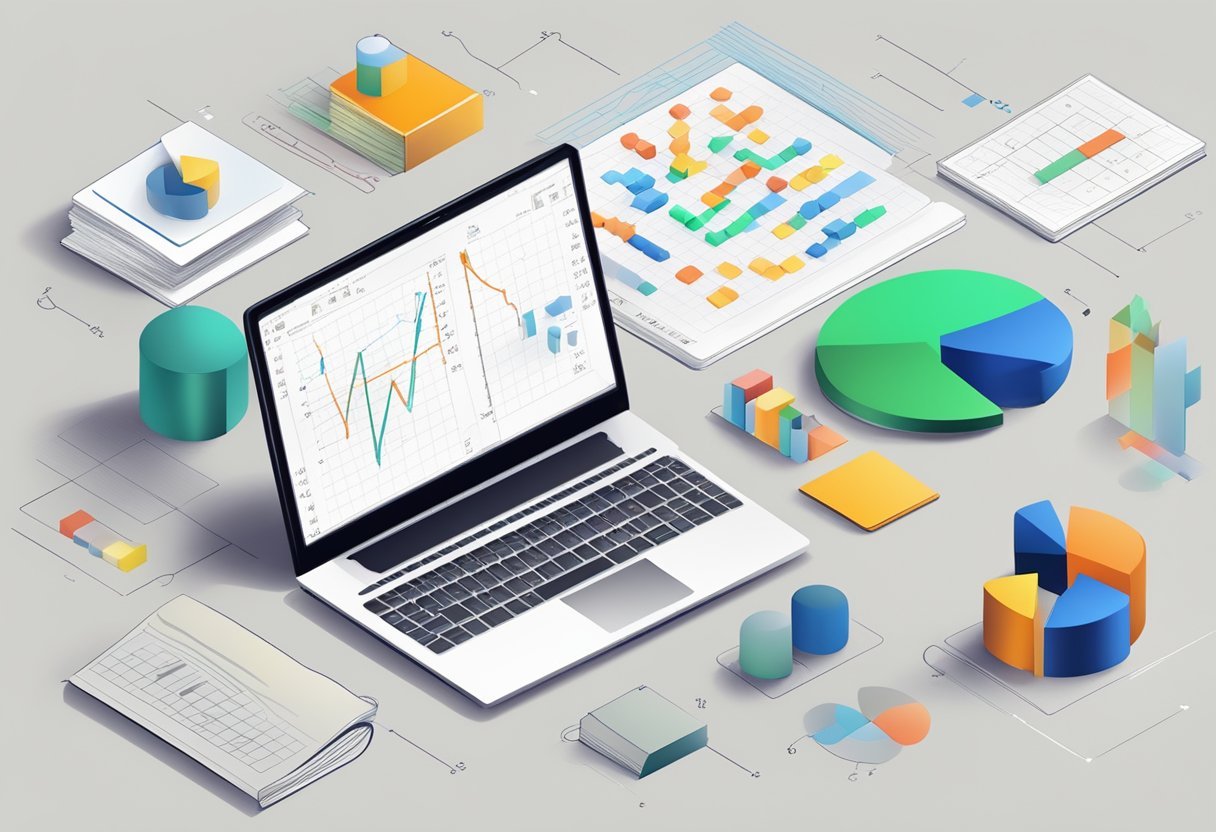Overview of T-SQL String Data Types
T-SQL string data types are essential for storing and managing text in databases. They include various forms, each serving specific needs for data length and format.
Understanding these types helps in optimizing database design and ensuring data integrity.
Understanding Character Data Types
In T-SQL, character data types are used to store non-binary text. Common types include char, varchar, text, nchar, nvarchar, and ntext.
-
Char and nchar store fixed-length strings, with char being non-Unicode and nchar supporting Unicode, which is useful for international text.
-
Fixed-length fields can ensure consistent data length but may waste space if not fully used.
-
Varchar and nvarchar handle variable-length strings. Varchar is for ASCII text while nvarchar supports Unicode.
-
This flexibility is crucial when the string length varies, saving space compared to fixed-length types.
-
Text and ntext are older data types, largely replaced by varchar(max) and nvarchar(max), which support very large strings.
-
These maximum length types help when more extensive text storage is needed, such as for documents or large text fields.
Exploring Binary String Types
T-SQL also includes binary string data types like binary, varbinary, and blob. These are designed for storing binary data like images, files, or encrypted information.
-
Binary is used for fixed-length binary data. It reserves a specific space, similar to char, making it useful when the exact size is known.
-
Varbinary and varbinary(max) handle variable-length binary data. They enable efficient storage and retrieval of data when the size may vary significantly.
-
While blob isn’t directly used in T-SQL, varbinary(max) often serves similar purposes in managing substantial binary objects.
Numeric and Date Data Types in T-SQL
T-SQL provides a wide range of numeric and date data types, allowing developers to store and manipulate data efficiently. The section covers how to work with integer types, manage precision and scale, and understand various date and time data types in T-SQL.
Working with Integer Types
T-SQL offers several integer types, each serving different storage needs. The types include int, tinyint, smallint, and bigint.
-
int: Commonly used, it stores 4 bytes and handles whole numbers from -2,147,483,648 to 2,147,483,647.
-
tinyint: Uses only 1 byte, ideal for small integers, ranging from 0 to 255.
-
For mid-range numbers,
smallint(2 bytes) is suitable, supporting from -32,768 to 32,767. -
When dealing with very large numbers,
bigint(8 bytes) is preferred, allowing values from -9,223,372,036,854,775,808 to 9,223,372,036,854,775,807.
These choices help manage storage space efficiently without loss of data integrity.
Handling Precision and Scale
Managing precision and scale is crucial in T-SQL when working with decimal and numeric data types. Both types can store fixed-point numbers with exact precision and scale. They are ideal for financial calculations where precision is vital.
-
Decimal/Numeric: You can define both precision (total number of digits) and scale (number of digits after the decimal point). For example,
decimal(10,2)means 10 total digits with 2 after the decimal. -
Precision affects storage size. More precision increases the bytes needed.
Using the correct precision and scale helps reduce errors in calculations, especially when rounding or performing divisions.
Date and Time Data Types
T-SQL has various date and time data types to accommodate different formats and time requirements.
-
Date: Stores only the date without time, useful for records where only the day is needed.
-
Time: Captures time without a date, ideal for time-tracking applications.
-
For both date and time data, use
datetimeto store full timestamps. It holds both date and time as a single entry. -
When fractional seconds are necessary,
datetime2offers more precision.
Using the right data type ensures accuracy in date and time operations, helping maintain the integrity of time-sensitive data.
Core String Functions in T-SQL
T-SQL offers a variety of string functions that are essential for data manipulation. These functions are used to modify, analyze, and retrieve string information, ensuring efficient database operations.
Basic String Functions
Basic string functions in T-SQL are used to find the length of strings using LEN, or to transform the case of texts with UPPER and LOWER.
The STR function helps format numbers as strings.
Combining strings is seamless with CONCAT and CONCAT_WS, which allows specifying a separator.
To extract specific parts of a string, LEFT, RIGHT, and SUBSTRING are the go-to functions.
LEFTandRIGHTgrab portions from the start or end, whileSUBSTRINGlets users pick any part within.
String Pattern Matching
For locating patterns, T-SQL provides functions like CHARINDEX and PATINDEX.
CHARINDEXfinds the first occurrence of a substring, whilePATINDEXis more flexible with pattern matching.
The SOUNDEX function helps in matching strings that sound similar, which is useful in searching names or words that might be spelled differently but sound alike.
To compare two strings by their phonetic representation, use DIFFERENCE.
Advanced String Manipulation
Advanced string functions allow deeper control over strings. The REPLACE function substitutes parts of a string, while STUFF deletes a part of it and inserts another string.
REVERSE flips a string’s characters.
Whitespace can be tricky, but LTRIM, RTRIM, and TRIM handle leading, trailing, or both ends.
SPACE generates a string of spaces, useful for formatting outputs.
QUOTENAME adds delimiters to identifiers, keeping them safe from syntax errors.
For intricate string manipulation, understanding these advanced functions is vital for producing clean, organized data.
Conversion and Casting Data Types
Understanding conversion and casting in T-SQL is crucial for handling different data types effectively. Each operation affects how data is interpreted and stored, which is essential for achieving desired results when working with SQL queries.
Conversion Functions
Conversion functions, like CAST and CONVERT, allow the transformation between different data types.
The CAST function is part of standard SQL and offers a straightforward syntax. For example, converting an integer to a varchar can be done using:
SELECT CAST(column_name AS VARCHAR(10))
The CONVERT function is specific to Transact-SQL and offers more flexibility. It has an optional style parameter to define the format. For instance, converting a date to a string might look like:
SELECT CONVERT(VARCHAR, GETDATE(), 101)
Each function has its advantages, and the choice between them depends on the specific requirements of the task.
Explicit and Implicit Casting
Explicit casting occurs when a user specifies the conversion of a data type using functions such as CAST or CONVERT. This is common when precision is required, like changing a float to an integer:
SELECT CAST(123.45 AS INT)
Implicit casting is done automatically by SQL Server when data types are compatible. This can happen when comparing different data types, such as a string and an integer.
Implicit conversions might affect performance due to potential data type mismatches.
Understanding when to use explicit versus implicit casting helps ensure efficient and effective data manipulation, reducing unexpected results or errors in SQL queries.
Using SQL Server String Functions
String functions in SQL Server are tools that allow for manipulation and examination of data within text fields. These functions are essential for data formatting, cleaning, and extracting useful information from strings.
SQL Server-Specific Functions
SQL Server provides a variety of string functions to handle different tasks. LEN() returns the length of a string, which helps in validating data sizes.
LOWER() and UPPER() convert text to lowercase or uppercase, standardizing text data.
LTRIM() and RTRIM() remove leading and trailing spaces, which is useful for cleaning up entries.
To extract parts of a string, SUBSTRING() is often used. Functions like RIGHT() and REVERSE() manage text by extracting characters from the right or reversing the string.
For replacing text within a string, REPLACE() is crucial.
Concatenating strings is done with CONCAT(), allowing multiple strings to be joined. Additionally, TRIM() removes unwanted spaces from both ends.
Some other helpful functions include POSITION(), which locates a substring within a string, and RPAD() or LPAD(), which pad text with spaces or characters.
Functions like REPEAT(), SUBSTRING_INDEX(), and LENGTH() also provide specific utilities to handle text effectively.
These functions together make handling and processing text-based data efficient and straightforward in SQL Server.
Text Management and Storage
In T-SQL, effectively managing and storing text data is crucial. Choosing the right data types and understanding how storage works will help in optimizing database performance.
Text Data Storage Considerations
When saving text data in SQL, selecting the appropriate data type is key. SQL provides options like CHAR, VARCHAR, TEXT, and NVARCHAR. Each has its own benefits and limitations.
CHAR and VARCHAR are used for storing alphanumeric data. CHAR is fixed-length, while VARCHAR allows variable lengths, making it more space-efficient.
TEXT is suitable for storing large strings but is less efficient for search operations. For international data, NVARCHAR is preferred due to its ability to store Unicode characters.
Choosing between these types depends on balancing storage needs and performance. More on these choices can be explored in T-SQL programming fundamentals.
Proper indexing and knowing storage limits also play a role. Understanding these aspects can lead to improved performance and resource utilization.
Querying and Manipulating Boolean Data
Working with Boolean data in T-SQL involves understanding how to use expressions that return true or false results. Boolean logic helps in filtering and querying databases efficiently, and understanding this can enhance the quality of SQL queries and database management.
Boolean Expressions in T-SQL
Boolean expressions in T-SQL are crucial for comparing and evaluating data. The primary data type used for Boolean logic in SQL Server is bit. Even though it’s commonly referred to as Boolean, this data type can store values of 0, 1, or NULL, representing false, true, or unknown.
In T-SQL, logical operators like AND, OR, and NOT are used to form Boolean expressions. For instance, queries often use these operators to filter data by conditions.
Consider a table storing user data. Filtering users over 18 would involve a WHERE clause: WHERE age > 18. This utilizes Boolean expressions to decide which rows to include.
Furthermore, conditions combined with Boolean expressions can control flow in stored procedures. They allow for more dynamic queries, responding to various inputs or states. Understanding these expressions is key to writing precise and efficient SQL queries. For more on T-SQL and its capabilities, see sources like Practical Guide for Oracle SQL, T-SQL, and MySQL, which covers data types including Boolean.
Error Handling and String Functions
Error handling is crucial in T-SQL to ensure that operations run smoothly even when issues like unexpected inputs or data types occur. String functions help manipulate and manage text data effectively, improving database interactions.
Preventing and Catching Errors
In Transact-SQL, preventing errors involves writing code that anticipates potential issues before they arise. For example, using the TRY...CATCH construct allows developers to manage anticipated and unanticipated issues gracefully. When a statement in the TRY block results in an error, control is transferred to the CATCH block.
Example:
BEGIN TRY
-- Operation expected to execute without errors
SELECT CAST('123' AS INT);
END TRY
BEGIN CATCH
-- Error-handling operations
SELECT ERROR_MESSAGE() AS ErrorMsg;
END CATCH
By catching errors efficiently, applications can continue operating and logging errors without crashing. This method helps identify which string functions or data types are causing issues during execution.
Moreover, typical error sources like mismatched data types can be avoided by validating inputs. Using functions designed to convert or handle text appropriately also helps. For a detailed exploration of persistent error patterns, check out Persistent errors in query formulation.
Optimizing T-SQL Queries for String Data
Optimizing T-SQL queries for string data can significantly enhance performance by reducing execution time and resource use. Factors like indexing, query structure, and SQL functions play crucial roles in achieving faster query results for string data types.
Query Performance Considerations
Indexing is vital for improving query performance with string data. It allows faster retrieval of data by providing a shortcut for the SQL engine to locate records. Creating indexes on columns that are frequently used in search conditions aids in optimization.
Another method is to consider using SQL functions wisely, as they can sometimes slow down query execution. For string data, functions like CHARINDEX or SUBSTRING are helpful but should be used judiciously in WHERE clauses since they might hamper index usage.
Optimizing queries may also involve rewriting them to avoid unnecessary complexity. For instance, reducing the use of wildcards at the start of string patterns in search queries can enhance performance.
Selecting relevant string data types like VARCHAR instead of CHAR can also make a difference, as they reduce the amount of space and processing required. Such adjustments result in faster query execution and lower resource consumption.
Collations and Unicode Support in T-SQL
Collations and Unicode support are key to working with string data in T-SQL. Proper use of collations ensures accurate sorting and comparison of string data, while Unicode support allows for managing diverse language characters.
Understanding Collations
Collation determines the rules for comparing and sorting string data in SQL Server. It affects how character data is processed, which is essential for applications with multi-language support. There are two main types of collation: SQL Server and Windows.
Users must choose the right collation at the database or column level to ensure correct data handling. Collation settings impact case sensitivity and accent sensitivity.
For instance, a German collation with case insensitivity treats ‘A’ and ‘a’ as equal, while accent sensitivity respects differences between accented characters. Adjusting these settings is crucial for applications handling international data.
SQL Server allows dynamic collation changes, providing flexibility in managing data from diverse sources.
Working with Unicode Data
Unicode in T-SQL allows representation of a vast range of characters through data types like nvarchar, nchar, and ntext. These types store data using the Unicode standard, supporting characters from multiple languages and symbol sets.
nvarchar is often preferred for variable-length Unicode data, offering benefits such as efficient storage and reduced data size compared to fixed-length types like nchar.
While ntext is a deprecated type, it still appears in legacy systems. The recommended practice is to store Unicode data in columns that specifically require it, as it consumes more space.
Understanding differences between Unicode and non-Unicode data types is essential for optimal database design and performance, especially in multilingual applications.
Frequently Asked Questions
T-SQL provides various string data types and functions for handling text data. Understanding these concepts is essential for managing and manipulating text in SQL Server databases.
What are the different string data types available in T-SQL?
T-SQL offers several string data types. The most common are CHAR, VARCHAR, NCHAR, and NVARCHAR. CHAR and NCHAR have a fixed length, while VARCHAR and NVARCHAR are variable-length. Each serves different purposes and suits various storage needs.
How can you manipulate strings using T-SQL functions?
T-SQL includes versatile functions for string manipulation. Some of these functions enable trimming, concatenation, or substring extraction.
Functions like LEN, SUBSTRING, CHARINDEX, and REPLACE are widely used to handle different string-processing tasks.
What is the difference between VARCHAR and NVARCHAR data types in T-SQL?
VARCHAR stores non-Unicode strings, while NVARCHAR handles Unicode strings. NVARCHAR is suitable for supporting multiple languages as it uses two bytes per character. VARCHAR, on the other hand, uses one byte per character and is ideal when storage space is a concern.
Can you provide examples of common string functions in T-SQL and their uses?
Examples include LEN() for string length, SUBSTRING() for extracting parts of a string, and REPLACE() for replacing characters. UPPER() and LOWER() convert strings to uppercase or lowercase. These functions help in data validation and text formatting.
How do string functions in T-SQL differ from those in standard SQL?
While T-SQL string functions align closely with those in standard SQL, specific implementations and features may differ. T-SQL often includes additional functionalities and performance optimizations tailored for SQL Server.
For example, T-SQL might offer unique syntax or additional options not found in standard SQL.
What are the best practices for using string data types in T-SQL to ensure database efficiency?
Choosing the right string data type is crucial. Use VARCHAR and NVARCHAR for variable-length data to save space. For fixed-length data, CHAR and NCHAR are better.
Indexing can also improve query performance. Be cautious with Unicode data types, as they require more storage space.



































